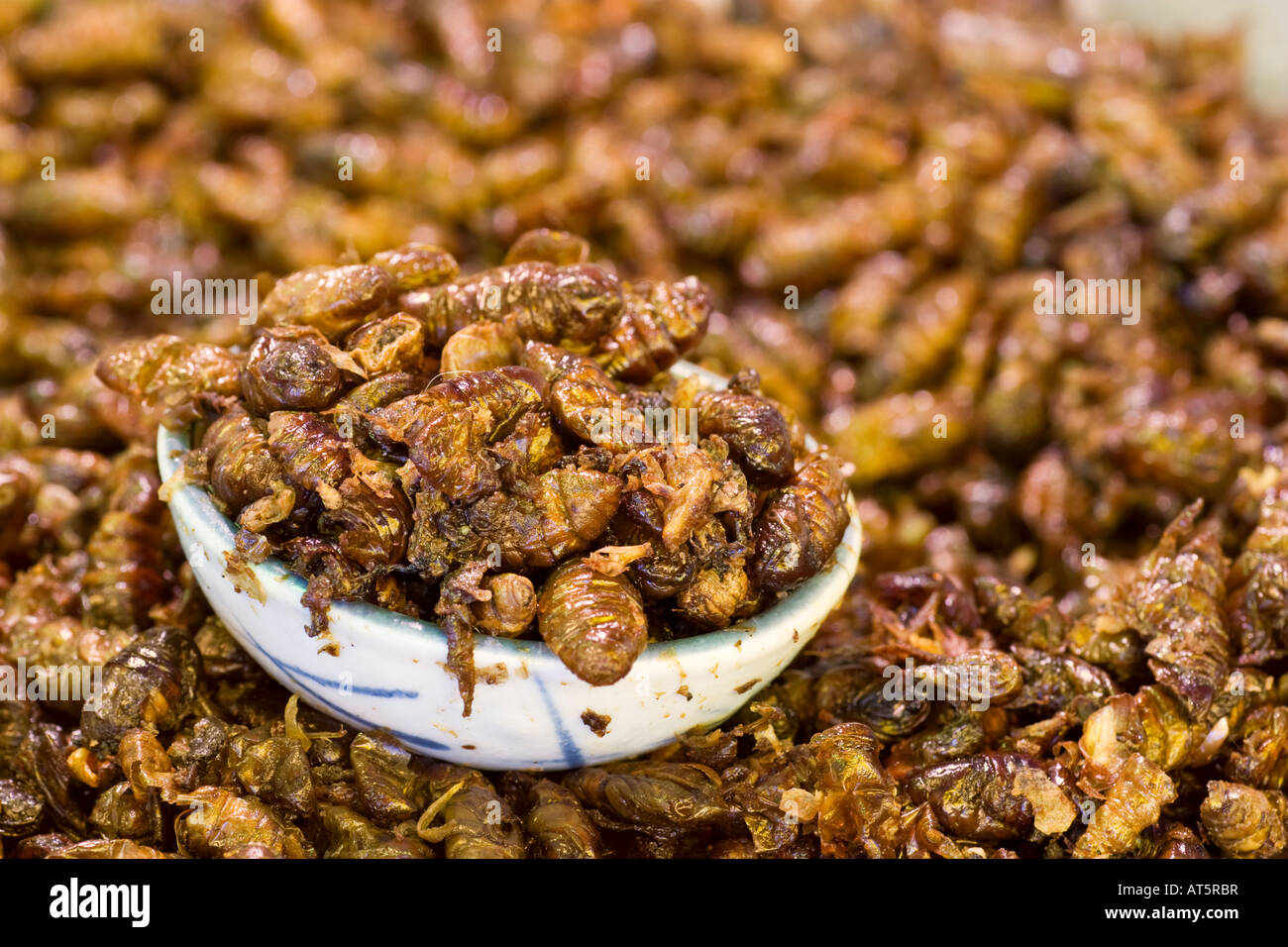MiyazakiHatesKojima
Banned
Finding a bug in your food can be a moment of horror that kills the mood and your appetite in one fell swoop. But that might be about to change, according to Meticulous Research, who've crunched the numbers on why we'll soon be voluntarily crunching insects.
The market research company predicts the global market for edible insects could grow to $1.18 billion by 2023. That's almost triple its current level.
So, what's behind this anticipated increase in appetite for creepy-crawlies?
There are a number of factors in play and the answer is wrapped up in an understanding of how insects compare with the production and farming of other food types.
Per kilo of live weight, bugs emit less harmful gas than more mainstream farm animals. A cow, for example, produces 2.8 kg of greenhouse gas per kilo of live body weight. Insects, on the other hand, produce just 2 grams.
They also consume fewer resources than traditional livestock. For each kilo it weighs, a cow needs 10 kg of feed. Bugs on the other hand need just 1.7 kg.
Water, which is becoming an increasingly scarce resource in some parts of the world – and which is used liberally in intensive farming – offers another interesting comparison. To produce a single gram of insect protein, you'd need 23 litres of water. That might sound like a lot. But to get that same gram of protein from cattle, you'd need 112 litres of water.
From the farmer's point of view, raising insects is going to be radically different from raising sheep, pigs, or cattle. No more coping with mud, muck and filth. An end to shifting heavy sacks of feed. And forget about having to go outdoors in all weather to manhandle livestock.
The requirement for investment in equipment will be different too. This will be farming on a much smaller scale, reducing the need for large and expensive machinery.
It may not be too long before we can all buy a bag of edible insects at our local grocery store. Despite being eaten by 2 billion people globally, EU laws have prevented the sale of insects for human consumption.
However, the EU's new Novel Food Regulation, which came into force in January, might mean insects will become a more common sight on European plates.
In 2017, Switzerland changed its food safety laws and became the first European country to allow the sale of insect-based food for humans. And the same year, the Coop unveiled a range of mealworm burgers and balls in some of its Swiss supermarkets.
In March, IKEA's external innovation lab SPACE10 revealed it is "reimagining" popular dishes at the retailer's in-store restaurants. In a blog post, the researchers explain that they are working on bug burgers and mealworm meatballs, but add that the new ingredients are being tested so customers won't find them on IKEA menus.
As scarcity of resources and sustainability become increasingly important issues for food production and distribution, how long before you're asking for insects in your food, rather than complaining if you find one?
The market research company predicts the global market for edible insects could grow to $1.18 billion by 2023. That's almost triple its current level.
So, what's behind this anticipated increase in appetite for creepy-crawlies?
There are a number of factors in play and the answer is wrapped up in an understanding of how insects compare with the production and farming of other food types.
Per kilo of live weight, bugs emit less harmful gas than more mainstream farm animals. A cow, for example, produces 2.8 kg of greenhouse gas per kilo of live body weight. Insects, on the other hand, produce just 2 grams.
They also consume fewer resources than traditional livestock. For each kilo it weighs, a cow needs 10 kg of feed. Bugs on the other hand need just 1.7 kg.
Water, which is becoming an increasingly scarce resource in some parts of the world – and which is used liberally in intensive farming – offers another interesting comparison. To produce a single gram of insect protein, you'd need 23 litres of water. That might sound like a lot. But to get that same gram of protein from cattle, you'd need 112 litres of water.
From the farmer's point of view, raising insects is going to be radically different from raising sheep, pigs, or cattle. No more coping with mud, muck and filth. An end to shifting heavy sacks of feed. And forget about having to go outdoors in all weather to manhandle livestock.
The requirement for investment in equipment will be different too. This will be farming on a much smaller scale, reducing the need for large and expensive machinery.
It may not be too long before we can all buy a bag of edible insects at our local grocery store. Despite being eaten by 2 billion people globally, EU laws have prevented the sale of insects for human consumption.
However, the EU's new Novel Food Regulation, which came into force in January, might mean insects will become a more common sight on European plates.
In 2017, Switzerland changed its food safety laws and became the first European country to allow the sale of insect-based food for humans. And the same year, the Coop unveiled a range of mealworm burgers and balls in some of its Swiss supermarkets.
In March, IKEA's external innovation lab SPACE10 revealed it is "reimagining" popular dishes at the retailer's in-store restaurants. In a blog post, the researchers explain that they are working on bug burgers and mealworm meatballs, but add that the new ingredients are being tested so customers won't find them on IKEA menus.
As scarcity of resources and sustainability become increasingly important issues for food production and distribution, how long before you're asking for insects in your food, rather than complaining if you find one?











